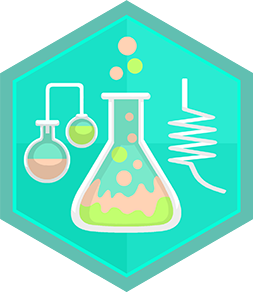Set up a chemistry lab
Set up a safe mini chemistry lab using household items, label tools, practice safety rules, and perform simple experiments like vinegar and baking soda.



Step-by-step guide to set up a safe mini chemistry lab using household items
Basic chemistry lab skills
Step 1
Gather all the Materials Needed and bring them to your work area.
Step 2
Choose a flat workspace near a sink where spills are easy to clean up.
Step 3
Put a tray or towel on the workspace to catch any spills.
Step 4
Arrange the cups and tools neatly on the tray so everything is easy to reach.
Step 5
Use masking tape and the marker to label each cup and tool with its name.
Step 6
Put on your safety goggles and gloves before starting any experiments.
Step 7
Write three simple safety rules on the paper and tape the paper where you can see it.
Step 8
Measure 1 teaspoon of baking soda and put it into an empty labeled cup.
Step 9
Measure 1/4 cup of vinegar into the measuring cup.
Step 10
Add 1 or 2 drops of food coloring to the vinegar if you want colored fizz.
Step 11
Slowly pour the vinegar into the cup with baking soda and watch the reaction.
Step 12
Describe out loud or draw on paper what you see happen during the fizzing.
Step 13
Rinse the used cups and spoon in the sink with plenty of water.
Step 14
Dry the workspace and put all tools and materials away safely.
Step 15
Share a photo or description of your finished mini lab and experiment on DIY.org.
Final steps
You're almost there! Complete all the steps, bring your creation to life, post it, and conquer the challenge!


Help!?
What can I use if I can't find safety goggles, gloves, or food coloring?
Have an adult wear sturdy glasses or a face shield and do the measuring/pouring while kids wash hands, and if you don't have food coloring you can skip it or add one drop of diluted washable paint to the 1/4 cup vinegar for colored fizz.
Why is there little or no fizz when I pour the vinegar into the baking soda?
Check that you used 1 teaspoon of baking soda (not baking powder) and 1/4 cup of vinegar, pour the vinegar slowly into the cup with baking soda as instructed, and try fresh ingredients or slightly more vinegar if the reaction stays weak.
How should I change the steps for preschoolers versus older kids?
For preschoolers, pre-measure the baking soda and vinegar, label the cups for them and have an adult pour over a tray to catch spills, while older kids can vary the measured amounts, record observations on paper, and compare results as a mini experiment.
How can we make the mini lab more interesting or competitive?
Turn the setup into a volcano by molding clay around a labeled cup, test different vinegars or amounts to see which creates the biggest fizz, add food coloring to the 1/4 cup vinegar for visual effects, and share a photo of the winner on DIY.org.
Watch videos on how to set up a safe mini chemistry lab using household items
Chemistry Lesson | pH Indicator | Acid & Base Experiment | Science for Kids
Facts about home chemistry for kids
🧴 Baking soda (sodium bicarbonate) is a gentle cleaner and is often used in fridges to absorb odors.
🥽 Lab safety tip: always wear goggles and never taste or directly sniff experiment mixtures — safety makes experiments more fun!
🌋 Mixing vinegar and baking soda creates carbon dioxide gas, the same gas that makes fizzy drinks bubbly.
🎈 That carbon dioxide can inflate a small balloon when you funnel the gas from the reaction into it.
🧪 Vinegar is typically about 5% acetic acid — strong enough to react with baking soda and make fizz!
How do I set up a safe mini chemistry lab at home for kids?
What materials do I need for a safe home chemistry lab?
What ages is this activity suitable for?
What safety rules should we follow when doing home chemistry?


One subscription, many ways to play and learn.
Only $6.99 after trial. No credit card required



